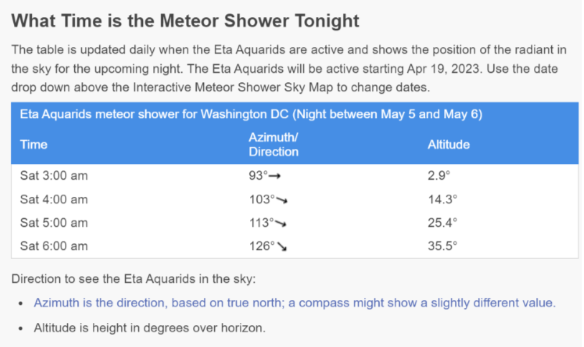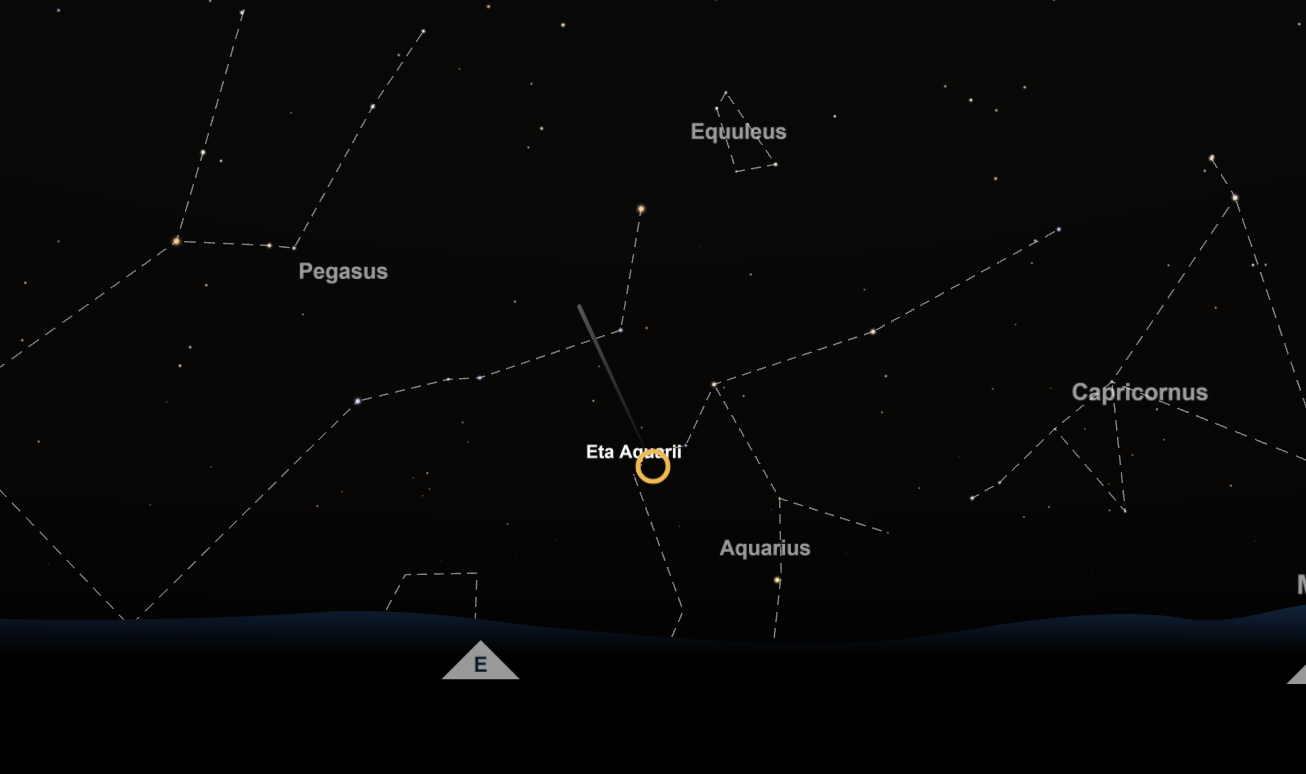The Eta Aquarids is one of two meteor showers created by debris from Comet Halley. The meteor shower is usually active between April 19 and May 28 every year. It will peak on the night between May 5–6
Comet Halley takes around 76 years to make a complete revolution around the Sun. The next time it will be visible from Earth is in 2061.
You don’t need any special equipment or a lot of skills to view a meteor shower. Even though all you really need is a clear sky, lots of patience, and our handy Interactive Meteor Shower Sky Map with a visibility conditions meter to see a meteor shower, the following tips can help maximize your shooting star viewing experience.
- Find a secluded viewing spot, away from the city lights. Once at the venue, your eyes may take 15 to 20 minutes to get used to the dark.
- Dress for the weather, and make sure you are comfortable, especially if you plan to stay out long. Bring a blanket or a comfortable chair with you—meteor watching can be a waiting game.
- Once you have found your viewing spot, lie down on the ground and look at the sky. You can use an Interactive Meteor Shower Sky Map or the table above to find the direction of the radiant; the higher the radiant is above the horizon, the more meteors you are likely to see.
- Meteor showers appear to originate from the radiant, but meteors can appear in any part of the sky.
Consult the chart below:


